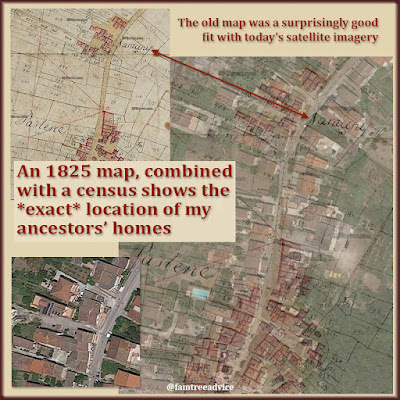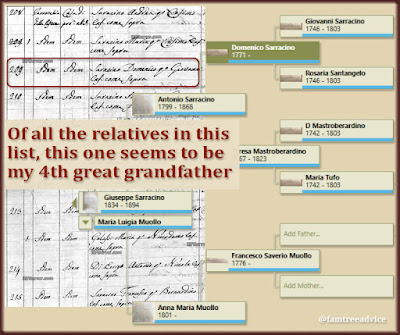Last week I told someone we can't expand her family tree. She knows a lot about the relatives born in the 1890s, but their mother will remain a mystery for one reason. The vital records for her town are not available.
To discover your Italian ancestors, you must know exactly where they were born. Only then can you check which birth, marriage, and death records are online. In this woman's case, we know the town, but almost no records have survived.
Missing Records Create Bricks Walls
I have a similar situation with my Grandma Mary's ancestors. I discovered exactly where they came from. It's a section of the town of Sant'Angelo a Cupolo called Pastene. Pastene is very small, and there are a lot of vital records available. The problem is, there are no records before 1861.
A few years ago I hired a pair of researchers based in Naples, Italy, to take a ride to Pastene. I last visited the town in 2018, but I found the church doors locked. I'm not sure how far I would have gotten even if I had made it inside. I asked the Italian researchers to give it a try.
They found a surprising lack of records. They said the town didn't keep pre-1861 records. Even the church records were scarce. The researchers did find a few scraps that helped my family tree. I was able to take Grandma's paternal line back 4 generations beyond her father. The paternal line of the Sarracino family goes back to the 1740s in my tree. I wish all her branches went that far!
 |
| This unexpected find proves exactly where my ancestors lived. I can walk right up and see their houses on my next visit. |
About 2 years later—and 2 years after my latest visit to Italy—I found a very interesting map online. This 1825 map of Pastene contains numbered tracts of land and houses. It highlights only 3 specific areas by name:
- the center of town containing the church and the piazza, labelled Pastene
- a cluster of houses labelled Saraceni
- a much smaller group of houses labelled Molli
I don't know why the map only calls out the names Saraceni and Molli. But I felt sure they referred to my Sarracino and Muollo ancestors.
What Other Documents Exist?
Now I have proof that I was right. While revisiting one of my genealogy bookmarks, I found the website with the Pastene map I'd found. I decided to explore the rest of the site to see what might be useful to me. To my surprise, I found a census of Sant'Angelo a Cupolo, including Pastene. I recognized all the last names on the pages.
My Italian historian friend explained this was part of a census of the entire Papal State. On the last page of the 60-page census of Sant'Angelo a Cupolo is the date 23 July 1825. The map has a long inscription with the exact same date. Clearly the map and the census go together.
As I paged through the census, I found quite a few families named Saracino. Each listing is nothing more than a person's name, their father's name, and a house or property number. I'm convinced one entry (Domenico Saracino, son of Giovanni) is my 4th great grandfather. The census tells me he lived in house 209 and/or 222. On the map, 209 and 222 are in the Saraceni cluster of houses.
 |
| My ancestors' town is small enough for me to believe I found their home in 1825! |
Pastene is a one-road town. The Saraceni section of the map is at a noticeable bend in the road. That bend helped me find it on Google Maps and go in for a closer look.
Now I know exactly where to walk on my next visit there.
I'm at a dead end with Grandma's family due to a lack of records. At least now I may know why. Pastene ignored Napoleon's decree to document their people because it was church property. They started keeping records in 1861 because that year they belonged to the state.
The town's website says, the Church passed ownership of the town to the Kingdom of Italy in September 1860. My Pastene became part of the newly established Province of Benevento in 1861. And then the record keeping began.
Knowing exactly where my ancestors lived, down to the house numbers, is wonderful. I can't trace them back any further, but I can walk among their homes. That's my consolation prize.
I'll continue to explore the 1825 census for more clues. What unexpected historical documents might you find for your town?
Oh wow! How exciting! I know that your next trip to Italy will be unforgettable. I can't wait to read all about it. :)
ReplyDelete